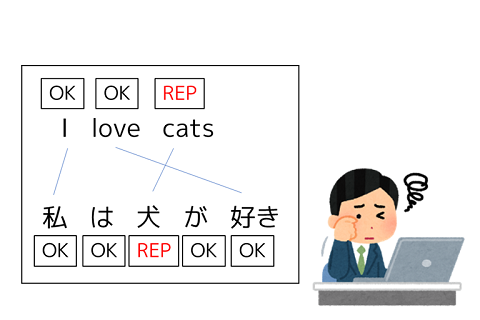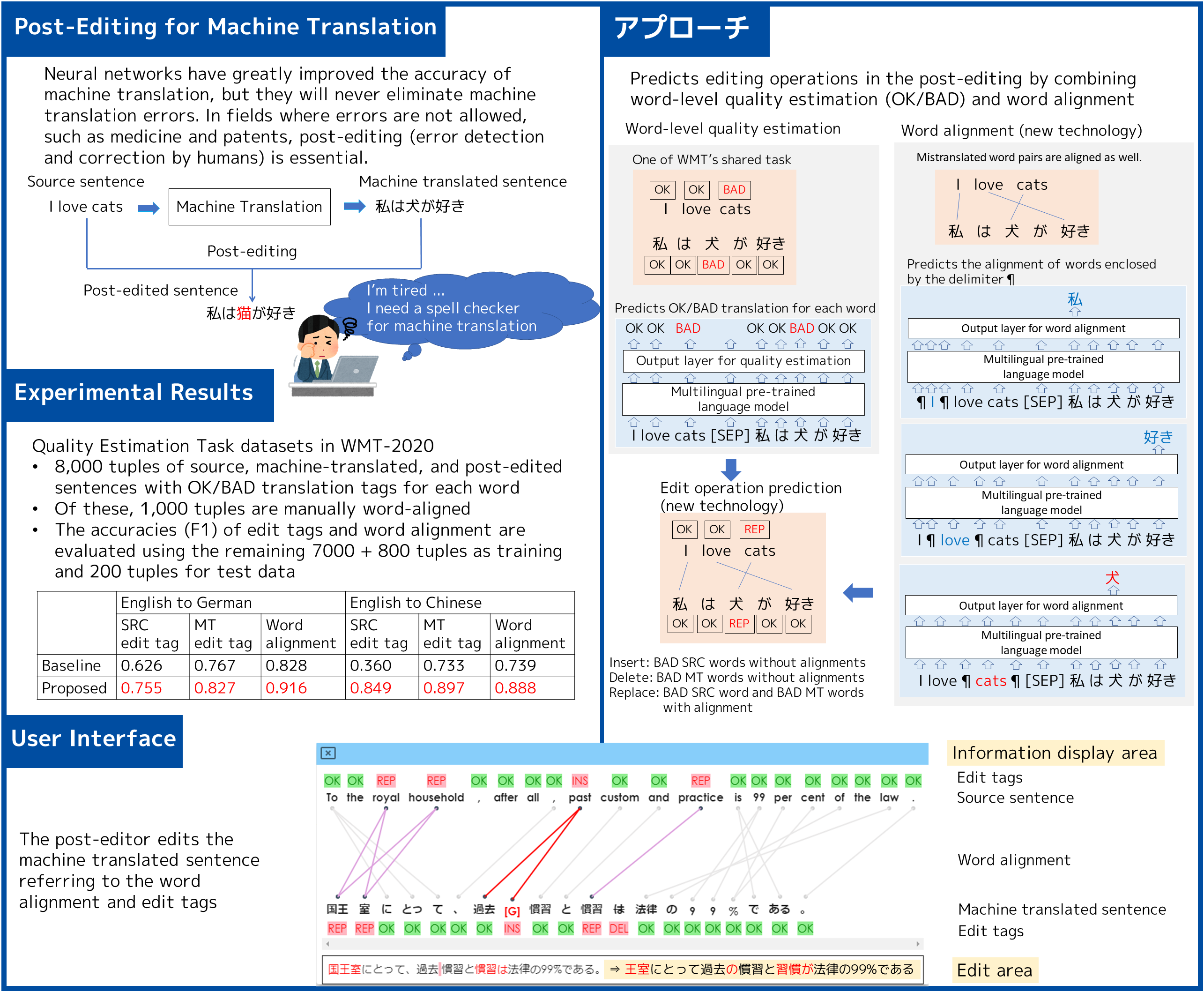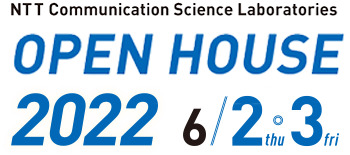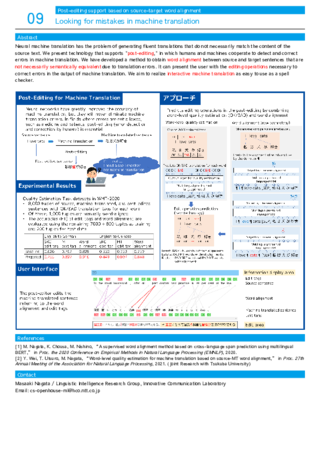| 09 |
Looking for mistakes in machine translationPost-editing support based on source-target word alignment 
|
|---|
Neural machine translation has the problem of generating fluent translations that do not necessarily match the content of the source text. We present technology that supports "post-editing," in which humans and machines cooperate to detect and correct errors in machine translation. We have developed a method to obtain word alignment between source and target sentences that are not necessarily semantically equivalent due to translation errors. It can present the user with the editing operations necessary to correct errors in the output of machine translation. We aim to realize interactive machine translation as easy to use as a spell checker.

[1] M. Nagata, K. Chousa, M. Nishino, “A supervised word alignment method based on cross-language span prediction using multilingual BERT,” in Proc. the 2020 Conference on Empirical Methods in Natural Language Processing (EMNLP), 2020.
[2] Y. Wei, T. Utsuro, M. Nagata, “Word-level quality estimation for machine translation based on source-MT word alignment,” in Proc. 27th Annual Meeting of the Association for Natural Language Processing, 2021. (Joint Research with Tsukuba University)
Masaaki Nagata / Linguistic Intelligence Research Group, Innovative Communication Laboratory
Email: cs-openhouse-ml@hco.ntt.co.jp



